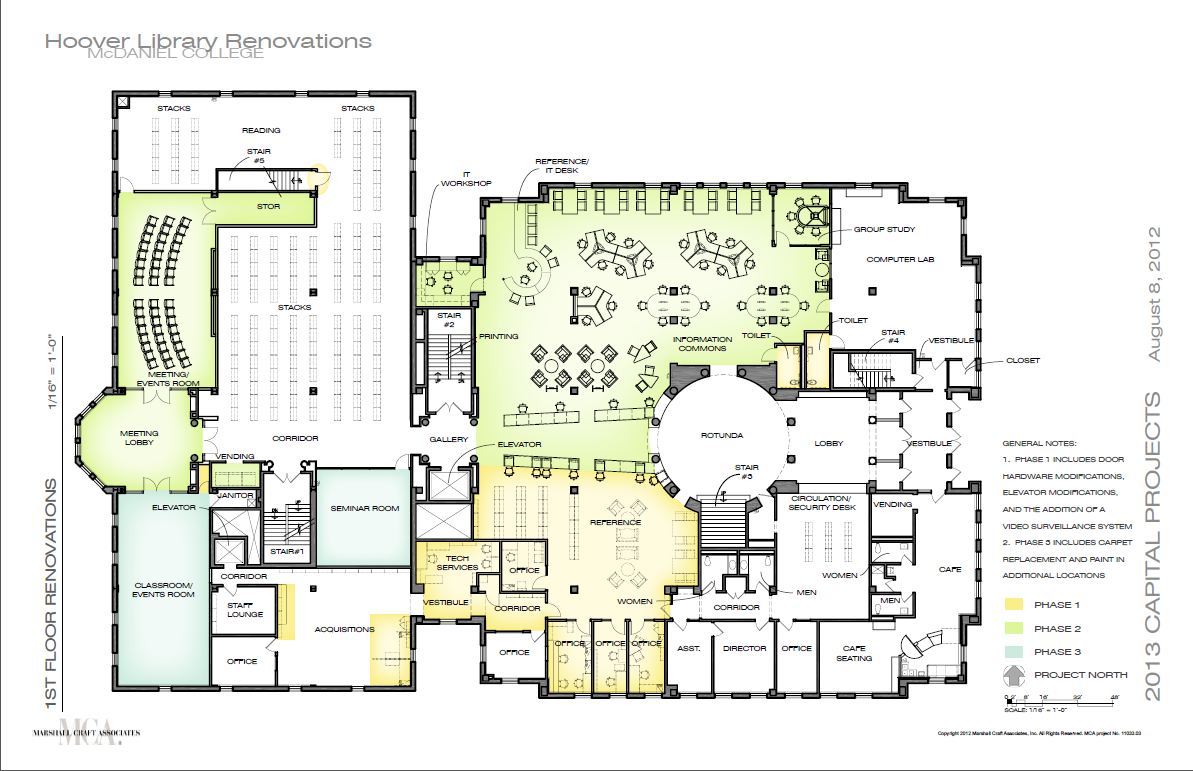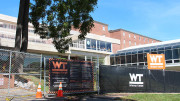The renovations on Bair Stadium—expected to finish by the 2012 football season—will be a proud accomplishment for not just the faculty involved, but the alumni of McDaniel College as well. The funding for the projected 9.5 million dollar budget was the first capital project provided completely by gifts and donations.
For many years, Bair Stadium just didn’t fit with the campus aesthetically. The Board of Trustees (along with the Institutional Advancement Division) made a decision six years ago to start a Stadium Committee to oversee all aspects of the future renovations. The decision, many believed, would complete the campus equation by building a stadium that would meet students’ expectations.
Ken Gill became the chair of the committee along with Director of Special Projects Lee Primm as faculty advisor, Vice President of Economics and Business Ethan Seidel, and a few trustee members. As part of a more comprehensive objective, the committee looked on the future of the stadium renovations as a recruiting tool for future students.
“I was asked to head up this project and had previously played football for Western Maryland College from 1957 to 1960,” said Ken Gill. “I really valued my college education. I felt like this was a wonderful way to say thank you to McDaniel. We previously had the worst stadium complex despite our popular tailgating. It was hurting recruiting because it was not a very attractive building.”
The first few years progressed slowly as the committee extensively discussed the changes that would be made and how much money would be used. It was very important to renovate the stadium in a way that would be similar to the campus’ current architecture.
Because many current McDaniel athletes said they loved the charge down the hill from Gill Gym, the committee decided to keep the locker rooms in Gill and just build team rooms in the stadium bottom floor. A new access road will also be built to ease transportation.
The bottom floor is dedicated to sports staff like the officials, visiting team and coaches. The second floor will contain hospitality rooms as well as catering, the president’s box and rooms for radio, television and press. The top floor will contain an overhang that will protect film crews during each game. Any money left over in the budget will go towards expanding the Gill Gym locker rooms.
In order to fund the project, the committee laid out an effective plan to ask alumni for gifts. Because of the recent recession, the renovations had to be paid for only through philanthropic donations.
The stadium committee interviewed countless alumni who were football players, lacrosse, etc. They also pursued leadership groups like team captains, eventually focusing on around seven networking groups. Two popular ones, for example, were the mid-‘50s and ‘60s athletes. Finally, committee members made personal contact with each and approached the situation pragmatically, often receiving generous gifts in return.
“It was wonderful. The responses were very positive. There were a wide variety of personalities and attitudes, giving us an opportunity to bring back alumni who felt alienated,” reported Primm.
Alumni participation is usually very low compared to many other colleges, so the countless gifts responsible for the stadium renovations can be considered a huge achievement. However there is always a better way to look at things.
“I think there is a misinterpretation of the generosity of alumni,” said Seidel. “There is a lot of it but it isn’t widespread over a large percentage. There is a low participation only in the Annual Fund which is the Operating Budget. But when it comes to big projects, the alumni are always generous.”
Some of the largest gifts from alumni ranged from 1.5 to two million dollars.
Currently the stadium committee is waiting to receive the detailed architectural specifications. Previously, contractors were hired to look at the floor plans and confirm that seven months as an estimated time for construction was reasonable. The committee expects to start in January.
After the stadium committee receives the spec drawings, the renovations will enter the bidding phase where numerous construction companies will make bids on the project. “It usually takes a couple of weeks to build a bidding strategy,” said Seidel. “They have to make sure they bid high enough that they will profit and low enough so as not to lose the job at the same time.”
Although the renovations for GLAR ran into numerous delays due to last minute architectural changes, the stadium project is expected to finish on time (unless “Snowmaggedon” recurs) because many years were dedicated to the designs. The construction will only affect Men’s and Women’s Lacrosse.
Many might fear the new stadium construction might impede the McDaniel College tailgating experience, but they can rest assured that the new building will still allow fans to pull up their cars and set up tents all along the outer rim as is the tradition.
Of the stadium, Gill said, “I believe it will be one of the most state-of-the-art stadium designs. It is rewarding to get the job done.”




